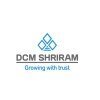Filter interviews by
India Glycols Interview Questions and Answers
25 Interview questions
The company faces challenges in adapting to rapid technological changes and maintaining employee engagement.
Technological Adaptation: The rapid pace of technological advancements requires continuous training and upskilling of employees.
Employee Engagement: High turnover rates indicate a lack of engagement; implementing feedback mechanisms can help address this.
Market Competition: Increased competition in our secto...
Noise monitoring is the process of measuring and assessing levels of noise in a specific environment.
Noise monitoring involves using specialized equipment to measure sound levels in decibels.
Data collected from noise monitoring can be used to assess compliance with noise regulations and identify potential health risks.
Examples of noise monitoring equipment include sound level meters, noise dosimeters, and noise mo...
Environment monitoring involves the collection and analysis of data to assess the quality of air, water, and soil in a specific area.
Monitoring air quality for pollutants such as particulate matter, ozone, and carbon monoxide
Monitoring water quality for contaminants like heavy metals, pesticides, and bacteria
Monitoring soil quality for pH levels, nutrient content, and presence of toxins
Using various instruments an...
Water monitoring is the process of regularly checking and analyzing the quality of water sources to ensure they meet environmental standards.
Water monitoring involves collecting samples of water from various sources such as rivers, lakes, and groundwater.
These samples are then analyzed for parameters like pH, dissolved oxygen, turbidity, and levels of pollutants.
The data collected from water monitoring helps in as...
To lineup a pump, ensure proper alignment of pump shaft with motor shaft and secure with coupling.
Check alignment of pump shaft and motor shaft
Use alignment tools like dial indicators to ensure accuracy
Secure alignment by adjusting motor position or shimming as needed
Install and tighten coupling to connect pump and motor shafts
Distillation is a process of separating components of a liquid mixture based on their boiling points.
Distillation involves heating a liquid mixture to create vapor, then cooling the vapor to collect the separated components.
Types of distillation include simple distillation, fractional distillation, and steam distillation.
Simple distillation is used to separate components with significantly different boiling points...
To lineup an ejector, ensure proper alignment of components and connections for efficient operation.
Ensure all components are properly aligned according to manufacturer's specifications
Check for any obstructions or misalignments that may affect performance
Verify connections are secure and properly fitted to prevent leaks
Use alignment tools such as laser alignment systems for precision
Perform regular maintenance to...
LMTD stands for Log Mean Temperature Difference. It is used in heat exchanger design to calculate the average temperature difference between hot and cold fluids.
LMTD is used to determine the overall heat transfer coefficient in a heat exchanger.
It is calculated using the formula: LMTD = (ΔT1 - ΔT2) / ln(ΔT1 / ΔT2)
LMTD helps in determining the required heat transfer area for a given heat exchanger design.
It is impo...
Bernoulli's theorem states that as the speed of a fluid increases, its pressure decreases.
It is a fundamental principle of fluid dynamics.
It is based on the conservation of energy in a fluid.
It is used to explain the behavior of fluids in pipes, nozzles, and wings.
It is also used in the design of carburetors, airplane wings, and water turbines.
The question is incomplete. Please provide more context.
India Glycols Interview Experiences
29 interviews found
I appeared for an interview in Feb 2025.
(2 Questions)
- Q1. Process errection commissioning
- Q2. Align team work together for it make advance planning and communicate timely with to the team
Interview Preparation Tips
I applied via Approached by Company and was interviewed in Nov 2024. There was 1 interview round.
(5 Questions)
- Q1. What is the Environment Impact, Environment Clarence
- Ans.
Environmental impact assessment (EIA) is a process to evaluate the potential environmental effects of a proposed project, while environmental clearance is the approval granted by the government for the project to proceed.
Environmental Impact Assessment (EIA) is a systematic process to identify, predict, evaluate, and mitigate the environmental effects of a proposed project.
Environmental clearance is the approval grante...
- Q2. What is the CCA Compliance
- Ans.
CCA Compliance refers to the regulations and standards set by the California Code of Regulations for environmental protection.
CCA stands for California Code of Regulations
Compliance refers to following the regulations and standards set by CCA for environmental protection
It includes requirements for air quality, water quality, hazardous waste management, and other environmental aspects
Companies and individuals must adhe...
- Q3. What is the environment monitoring
- Ans.
Environment monitoring involves the collection and analysis of data to assess the quality of air, water, and soil in a specific area.
Monitoring air quality for pollutants such as particulate matter, ozone, and carbon monoxide
Monitoring water quality for contaminants like heavy metals, pesticides, and bacteria
Monitoring soil quality for pH levels, nutrient content, and presence of toxins
Using various instruments and tec...
- Q4. What the noise monitoring
- Ans.
Noise monitoring is the process of measuring and assessing levels of noise in a specific environment.
Noise monitoring involves using specialized equipment to measure sound levels in decibels.
Data collected from noise monitoring can be used to assess compliance with noise regulations and identify potential health risks.
Examples of noise monitoring equipment include sound level meters, noise dosimeters, and noise monitor...
- Q5. What is the water monitoring
- Ans.
Water monitoring is the process of regularly checking and analyzing the quality of water sources to ensure they meet environmental standards.
Water monitoring involves collecting samples of water from various sources such as rivers, lakes, and groundwater.
These samples are then analyzed for parameters like pH, dissolved oxygen, turbidity, and levels of pollutants.
The data collected from water monitoring helps in assessi...
Interview Preparation Tips
(2 Questions)
- Q1. Errection commissioning and process
- Q2. Grain distillery and sugar plant, chemicals
Interview Preparation Tips
I applied via Recruitment Consulltant and was interviewed in Aug 2024. There was 1 interview round.
(2 Questions)
- Q1. Multi stage pump clearance
- Q2. Type of Pump alignment
- Ans.
Pump alignment can be achieved through methods like laser alignment, dial indicator alignment, and reverse indicator alignment.
Laser alignment is a precise method using laser beams to align the pump and motor shafts.
Dial indicator alignment involves using dial indicators to measure and adjust the alignment of the pump and motor shafts.
Reverse indicator alignment is a method where the pump is aligned to the motor by adj...
Interview Preparation Tips
- Metrology
- Centrifugal Pumps
- Vacuum Pumps
- Compressors
- SAP
2. Good knowledge of plant equipment's
(2 Questions)
- Q1. Technical round
- Q2. About Turbine
(1 Question)
- Q1. Discuss about education
- Ans.
Education is the foundation for personal and professional growth, providing knowledge and skills for success.
Education plays a crucial role in shaping individuals' perspectives and abilities.
It equips individuals with the necessary knowledge and skills to excel in their chosen field.
Education opens up opportunities for personal and professional growth.
Continuous learning and education are essential for staying relevant...
I appeared for an interview in Mar 2025, where I was asked the following questions.
- Q1. What is distillation
- Q2. Types of reactors
- Q3. What is mass transfer
- Q1. Distillery Process
- Q2. Distillery Process technology
- Ans.
Distillery process technology involves the production of alcoholic beverages through fermentation and distillation.
Fermentation: Yeast converts sugars into alcohol and carbon dioxide, e.g., in whiskey production.
Distillation: Separates alcohol from the fermented mash using heat, e.g., pot stills for Scotch whisky.
Aging: Spirits are aged in barrels to develop flavors, e.g., bourbon aged in charred oak barrels.
Filtration...
- Q3. Fermentation technology
- Q4. Milling and process
- Q5. Dryer and process and technology
- Q6. Mee section process
(2 Questions)
- Q1. There is any problem that the company are facing
- Ans.
The company faces challenges in adapting to rapid technological changes and maintaining employee engagement.
Technological Adaptation: The rapid pace of technological advancements requires continuous training and upskilling of employees.
Employee Engagement: High turnover rates indicate a lack of engagement; implementing feedback mechanisms can help address this.
Market Competition: Increased competition in our sector nec...
- Q2. About company dtail
Interview Preparation Tips
I appeared for an interview in Sep 2024.
(2 Questions)
- Q1. Working of compressor & turbine
- Ans.
Compressors increase pressure of gases, while turbines convert fluid energy into mechanical work.
Compressors are used in refrigeration and air conditioning systems to compress refrigerants.
Turbines are commonly found in power plants, converting steam or gas energy into electricity.
Positive displacement compressors (like reciprocating compressors) trap a fixed volume of gas and reduce its volume.
Centrifugal compressors ...
- Q2. BFW pump working & maintenances
I applied via Naukri.com and was interviewed in Feb 2024. There was 1 interview round.
(2 Questions)
- Q1. Boiler and turbine parameter
- Ans.
Boiler and turbine parameters are critical for efficient operation of power plants.
Boiler parameters include pressure, temperature, and efficiency.
Turbine parameters include speed, efficiency, and power output.
Monitoring and controlling these parameters is essential for optimal plant performance.
Examples of boiler parameters: pressure of 100 bar, temperature of 500°C, efficiency of 90%.
Examples of turbine parameters: s...
- Q2. Major work during last year
- Ans.
Implemented new operational procedures to streamline processes and improve efficiency.
Developed and implemented new SOPs for various departments
Analyzed current workflows and identified areas for improvement
Trained staff on new procedures and monitored their implementation
Conducted regular audits to ensure compliance and effectiveness
Top trending discussions






India Glycols Interview FAQs
The duration of India Glycols interview process can vary, but typically it takes about less than 2 weeks to complete.
Tell us how to improve this page.
India Glycols Interviews By Designations
- India Glycols Senior Engineer Interview Questions
- India Glycols Senior Engineer Mechanical Interview Questions
- India Glycols Management Trainee Interview Questions
- India Glycols Production Manager Interview Questions
- India Glycols Assistant Manager Interview Questions
- India Glycols Civil Engineer Interview Questions
- India Glycols Production Engineer Interview Questions
- India Glycols Junior Engineer Interview Questions
- Show more
Interview Questions for Popular Designations
Overall Interview Experience Rating
based on 30 interview experiences
Difficulty level
Duration
Interview Questions from Similar Companies
India Glycols Reviews and Ratings
based on 404 reviews
Rating in categories
|
Assistant Manager
85
salaries
| ₹5.4 L/yr - ₹10.8 L/yr |
|
Junior Engineer
73
salaries
| ₹2.1 L/yr - ₹5 L/yr |
|
Associate Manager
47
salaries
| ₹7.2 L/yr - ₹15 L/yr |
|
Senior Engineer
42
salaries
| ₹4 L/yr - ₹7.2 L/yr |
|
Senior Executive
41
salaries
| ₹3.5 L/yr - ₹7.5 L/yr |

Berger Paints

Pidilite Industries

SRF

Kansai Nerolac Paints
- Home >
- Interviews >
- India Glycols Interview Questions













